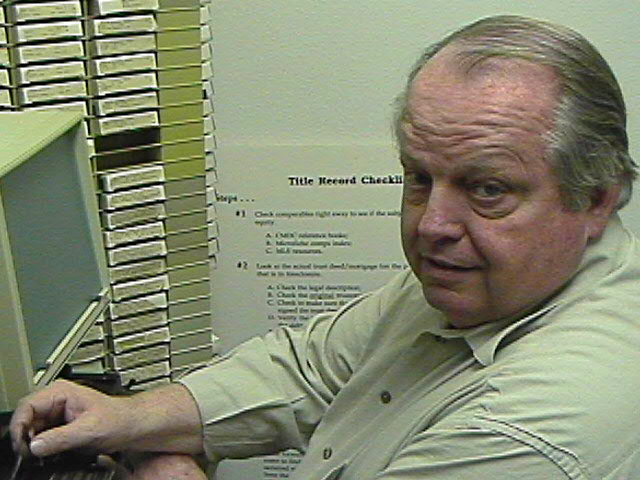
Foreclosure Forum

|
Foreclosure Forum |
|
|
Finding FITE and resolving open liens..In Reply to: 2 title search questions posted by Cindy MO on March 22, 2002 at 4:39 AM
: Ward, when you say to trace the title back to the FITE - what does that mean? =•=•=•=•=•=•=•=•=•=•= Cindy, you have to go back in time through the recorder’s title record until you reach a spot where you know that the property’s title was free and clear. Then you come forward and trace each lien, whether it’s voluntary (like a mortgage or trust deed) or involuntary (like an abstract of judgment or federal tax lien) until you find where each was paid off as witnessed by a satisfaction or reconveyance or release, etc. in the name of the original grantor. If you come all the way up to the present and the lien hasn’t been paid off then it is still against the title of the property. After you have searched all open liens you can then establish their relative priority according to their time of recording. FITE makes up 4 of the 5 ingredients that are required to unequivocally determine you have reached a point in time where the title to the property was free and clear. No need to go back in the title record any further than that point in time. The first ingredient you must find is a consecutive recording of a deed and a trust deed or mortgage in the title record of the property. Most of us start with the lien that’s in foreclosure and work back from there. When you find a simultaneous recording of a deed and trust deed/mortgage then check them for all ingredients of FITE. If you are lacking any of the 5 essential ingredients (simultaneous recording of the two doc’s is one of them) then just go back to an earlier tandem recording of a deed and trust deed/mortgage until you get all 5 ingredients. That point will be where you can stop going back in time. You have found your point of beginning. F= Then on the deed see if the FULL value designation is checked off concerning the transfer tax that was paid. I= Then on the trust deed or mortgage see if the beneficiary or mortgagee is an INSTITUTIONAL lender rather than a private individual. T= Then check on either the deed or trust deed/mortgage to see if there’s a TITLE order number referenced somewhere in the periphery of either document. E= Then check on either the deed or trust deed/mortgage to see if there’s an ESCROW number referenced somewhere in the periphery of either document. I reallly hope this helps. I take 2 hours to demonstrate this setup on the blackboard, so you’re doing extremely well if you can pick it up the first time through without any accompanying dialogue.
Follow Ups:
Post a Followup:
|
Information provided by this website is for informational purposes only and is not a substitute for professional advice. Please consult your investment advisor and/or attorney before entering into any transaction.
Copyright © 1997-2002, InnoVest Resource Management
InnoVest Resource Management, 4569-A Mission Gorge Place, San Diego CA 92120-4112
(619) 283-5444, Fax (619) 283-5455